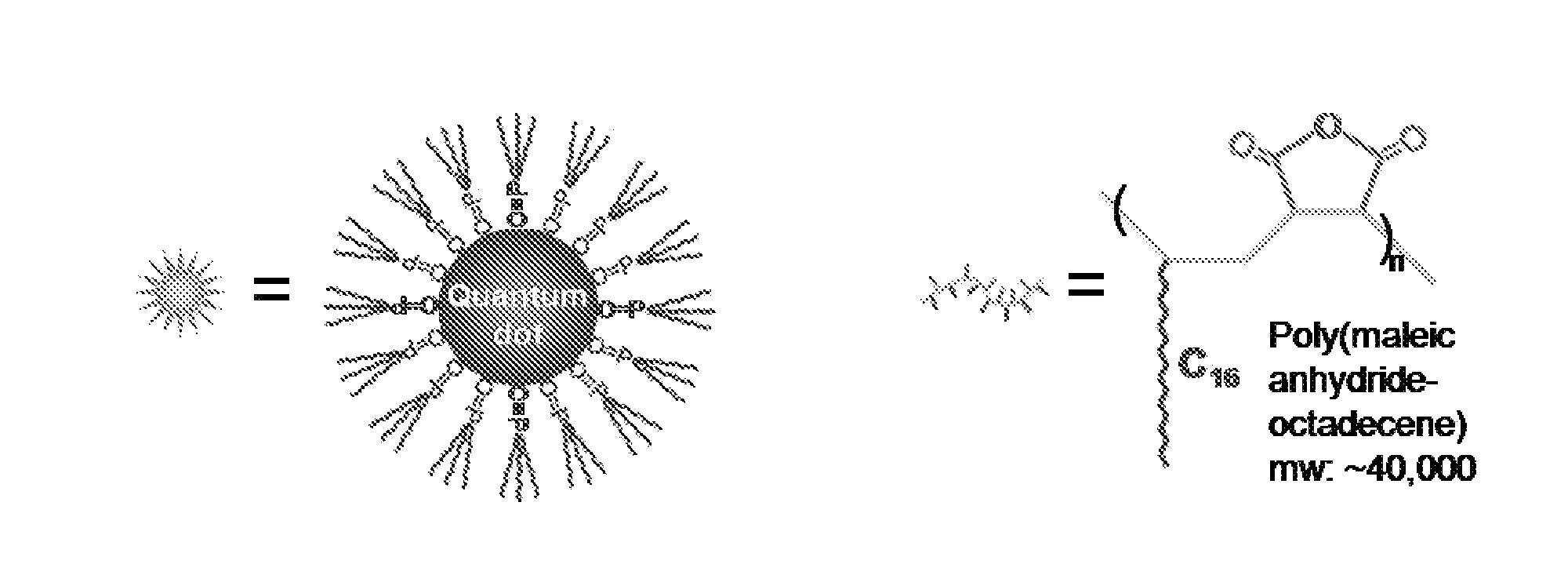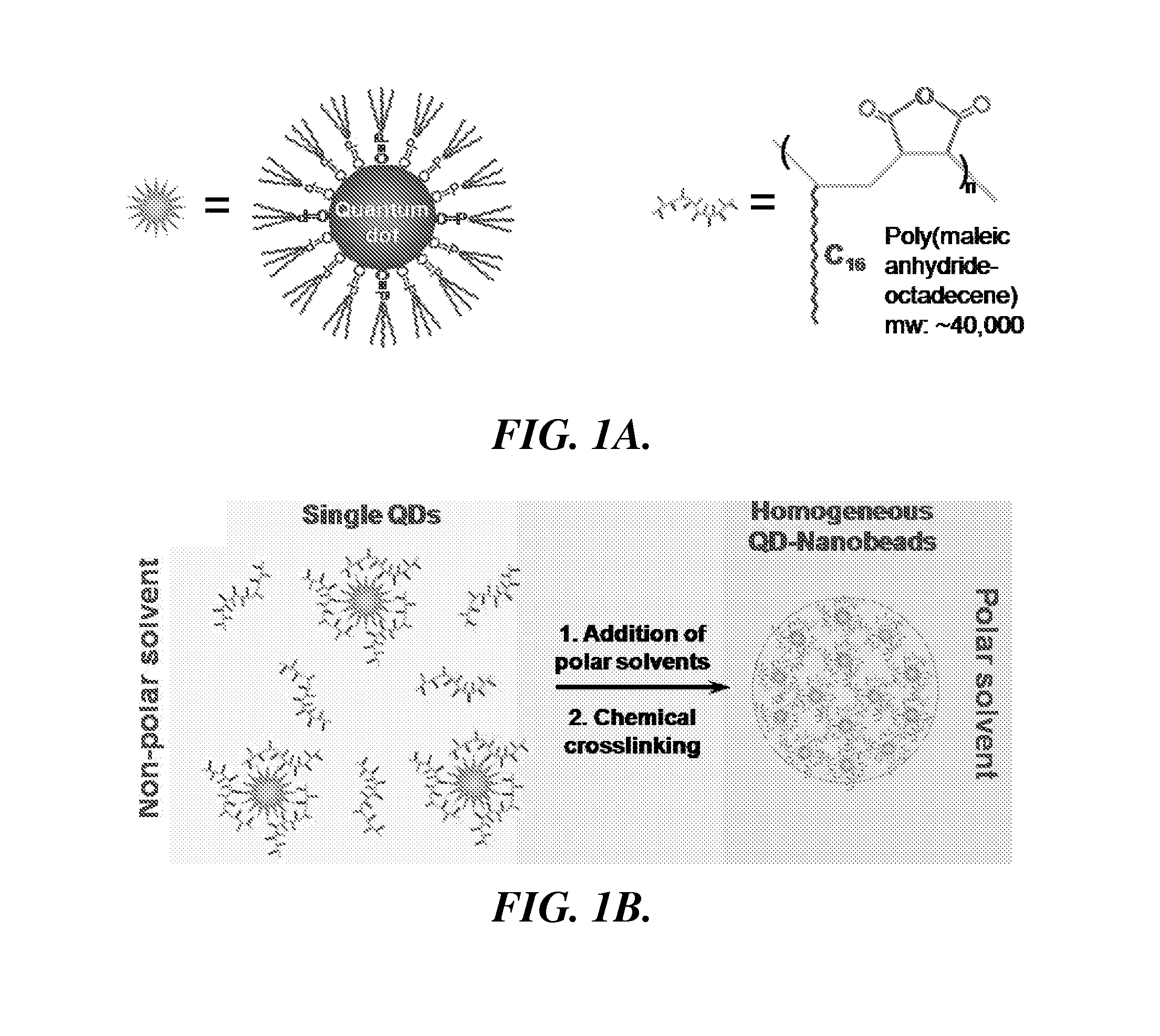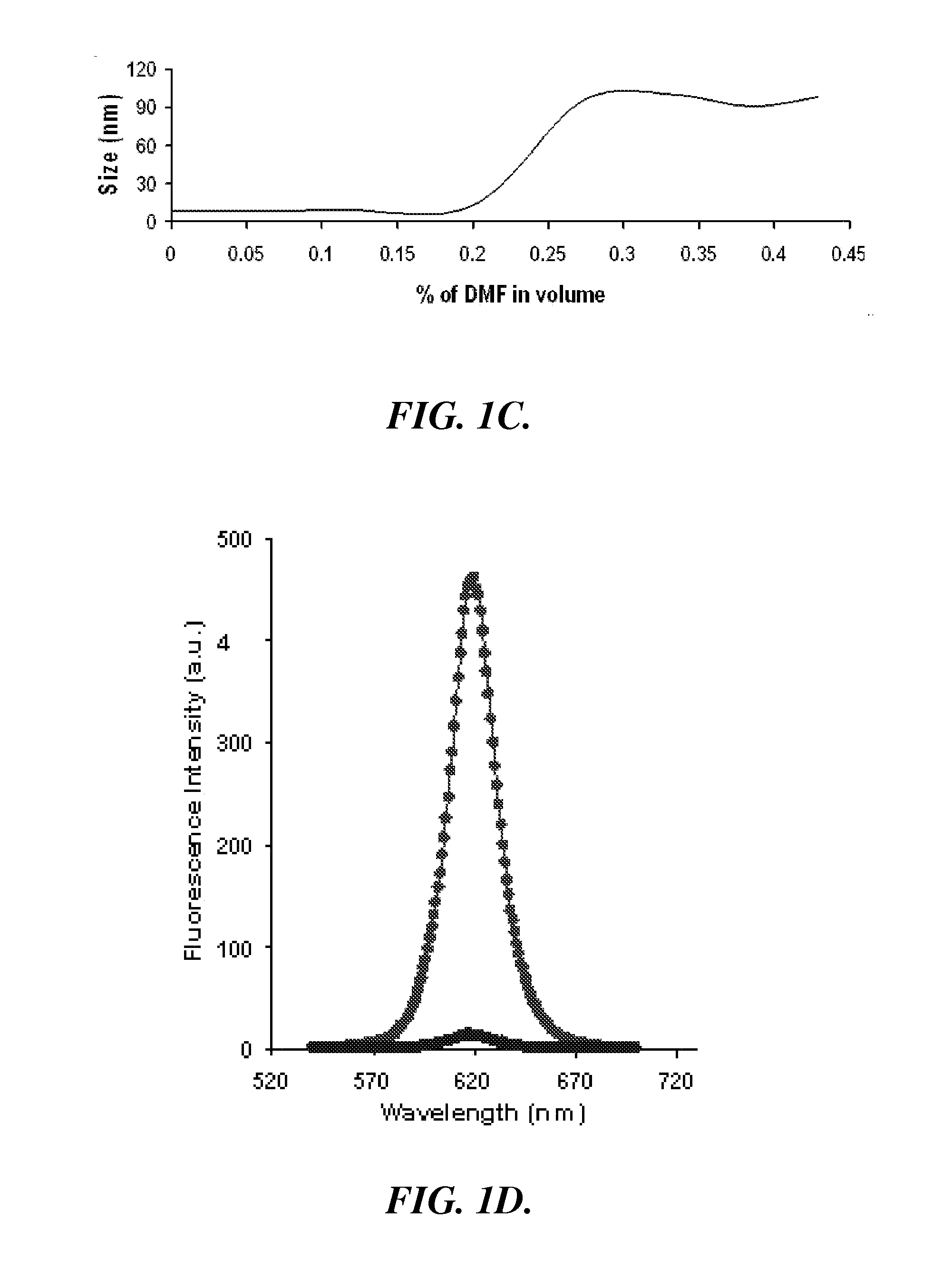Nanoparticle assemblies and methods for their preparation
a technology of nanoparticles and nanoparticles, applied in the field of fluorescent probes, can solve the problems of low nanoparticle loading capacity, inapplicability of qd-doped microspheres, and limited number of qds that can be encapsulated, so as to reduce hydrophobicity
- Summary
- Abstract
- Description
- Claims
- Application Information
AI Technical Summary
Benefits of technology
Problems solved by technology
Method used
Image
Examples
example 1
The Preparation of Representative Nanoparticle Assemblies
[0074]In this example, the preparation of representative nanoparticle assemblies of the invention are described.
[0075]Purified QDs (0.2 μM) (OceanNanotech, Ark.) and PMAO polymers (2.5 μM) were mixed in 0.2 ml THF in a glass vial, followed by slow addition of 0.8 ml DMF under vigorous stirring. The concentration of QDs were determined by UV absorption using the molar extinction coefficients for CdSe QDs previously determined by Peng et al., Chem. Mater. 2003, 15, 2854-2860. 2,2′-(ethylenedioxyl)bis(ethylamine) in DMF (10 mM, 2.85 μl) was added into the solution to crosslink the neighboring polymer chains. The solution was stirred at room temperature for 1 h before the dialysis against Tris buffer (20 mM, pH10). The nanobeads were isolated by centrifugation and washed multiple times using borate buffer (10 mM, pH8.1) to remove free polymers and diamines in the solution.
[0076]For multiplexed nanobarcode preparation, procedure si...
example 2
Representative Nanoparticle Assembly as Fluorescent Probe in Immunoassay
[0077]In this example, a representative nanoparticle assembly of the invention is used as a fluorescent probe in an immunoassay, a sandwich immunoassay for PSA.
[0078]Conjugation of Representative Nanoparticle Assemblies to Streptavidin. Red QD-nanoparticle assemblies, prepared as described in Example 1 above, suspended in 1 ml of borate buffer (10 mM, pH 8.1) were incubated with 50 μl of EDC (1 wt %) and 100 μl of sulfo-NHS (1 wt %) for 15 mins. 10 μl of streptavidin at a concentration of 5 mg / ml was then added and incubated with QD-nanobeads for 2 hrs. The bioconjugates were spun down to remove the unbound streptavidin and this process was repeated twice. The purified bioconjugates were dispersed in borate buffer with 1 wt % BSA.
[0079]PSA sandwich immunoassay. Standard sandwich immunoassays were performed for PSA detection using QD-nanobeads. To immobilize PSA capture antibody, 96-well microplate was incubated ...
PUM
| Property | Measurement | Unit |
|---|---|---|
| diameter | aaaaa | aaaaa |
| size | aaaaa | aaaaa |
| size | aaaaa | aaaaa |
Abstract
Description
Claims
Application Information
 Login to View More
Login to View More - R&D
- Intellectual Property
- Life Sciences
- Materials
- Tech Scout
- Unparalleled Data Quality
- Higher Quality Content
- 60% Fewer Hallucinations
Browse by: Latest US Patents, China's latest patents, Technical Efficacy Thesaurus, Application Domain, Technology Topic, Popular Technical Reports.
© 2025 PatSnap. All rights reserved.Legal|Privacy policy|Modern Slavery Act Transparency Statement|Sitemap|About US| Contact US: help@patsnap.com



